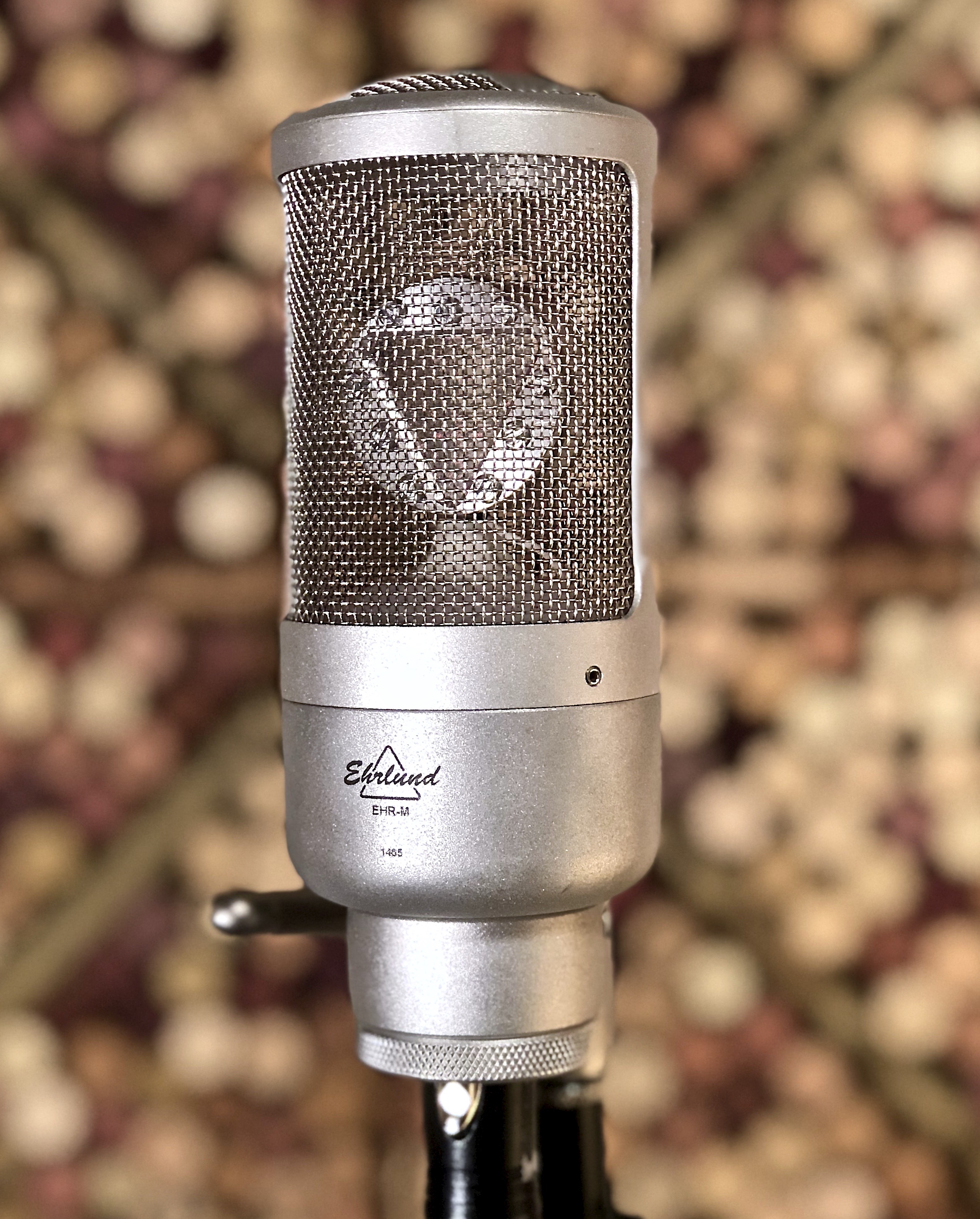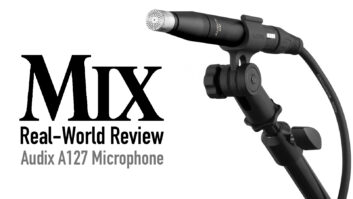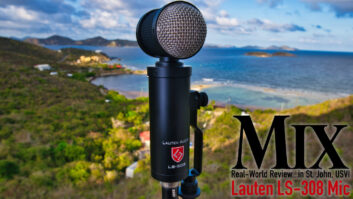
I’m not sure why I was so surprised to learn of Ehrlund Microphones’ signature use of triangular diaphragms in their studio microphones; after all, rectangular ones are quite popular these days and a ribbon mic’s ribbon is indeed a rectangular strip. We know that circular diaphragms have the most resonant properties (i.e., a drum head), so it stands to reason that a triangular one would have less resonance and therefore a different response. In my tests with the Ehrlund EHR-M, I found the mic to perform just a little differently than the norm for a cardioid LDC; a difference that was minimal in some cases and impactful in others.
Swedish manufacturer Ehrlund has a line of six mics and a number of transducer contact pickups, all with a triangular form-factor that reportedly harnesses the fine detail that is captured by a smaller area of pickup (towards the points of the triangle), as well as the fullness and high-output/low-noise of a larger area (think the center of the triangle).
This capsule design and its associated electronics (transformerless and a low phantom-power draw of only 2 mA) makes for some impressive specs: Frequency response from 7 Hz to 87 kHz (!); self-noise less than 7 dBA; max SPL of 125 dB; and reportedly exhibiting the same frequency response at any operating impedance. The mic’s body is aircraft-grade aluminum (fairly lightweight at 340 grams), with a nickel-plated, stainless-steel mesh windscreen, but there is no pad, filter or pattern switch of any kind.
The EHR-M does not come with a shockmount, but has a stand-mount that utilizes a lever for positioning. No windscreen or storage case is provided, although a protective sock is included.
I first threw the EHR-M into a session on drum room and then a thin male vocalist later that day. The drum room response was nicely articulated, with fast and exacting high-end response coupled with a lack of “slow decay” or fullness in the bottom end—more of a quick, natural and reference kind-of-thing. The vocalist was similar, with an emphasis on clean and accurate transients and no additional fullness or chesty thickness added, except for a little proximity effect which was easily controllable. Although those qualities remained with other applications, the deeper I dug in with the EHR-M, the more surprises I found.
While I was expecting the EHR-M to offer a tighter-than-cardioid pattern, it was indeed truly cardioid (with a little bump of sensitivity on the butt-end not unlike a typical hypercardioid pattern), but a little smoother off-axis than to be expected. I also found the mic to be insensitive to distance—that is to say, it was consistent whether in-close or across the room. Get close enough with a vocalist and some very usable proximity effect was there, too (I found this cutting VOs with a deep voiced, baritone, male voice actor who can get too thick).
I’ve had a rash of non-traditional drummers coming in with cajons, snares and cymbals as of late, and I found the EHR-M to be quite useful with such kits. I got wonderfully natural snare sounds from a position about 16” away and really nice cajon slaps, too, with super-sweet transients and a complete lack of hype or harshness. That said, the 125 dB SPL handling was not enough for a loud rock drummer; the mic’s response blew out and was unusable in this case (same thing in my attempts as center overhead, right over a banging drummer).
However, tests with acoustic guitar, vocals and hand percussion (tambo, agogo, maracas, vibraslap, claps) were all winners. I always got great results with acoustic guitar that seemed to mitigate my constant inner-debate over LDC vs SDCs. I got accurate, realistic and uncolored results in both the body and neck-meets-body positions. Percussion tracks with agogo, tambo and shaker showed off the EHR-M’s crisp top-end, which doesn’t distort, grabs transients with ease and both cuts and sits in a crowded mix quite well. Vocals seemed to be a mixed bag with the EHR-M, as it doesn’t provide any fullness to weak or thin voices, but boy does it capture truth and detail on full and powerful voices. In fact, I was stuck replacing a single bad vocal line cut with a conventional LDC with an EHR-M replacement line and I got them to (almost) match, but only after considerable EQ to the EHR-M tone.
Conversely, I found the EHR-M to be a perfect choice for baritone sax. As part of a four-piece group horn-tracking session, I found ample rejection of the other horns at 90 and 270 degrees off-axis (and with a pleasant tone to the bleed), fantastic capture of all the honky and “brappy” detail and a “deep and full, yet lean” bass response that was much more accurate and resonance-free than typical LDCs.
Once I got used to its strengths and limitations, I did not find anything not to like about the EHR-M. In fact, I was wishing for a pair for drum overhead (with moderate drummers), orchestral and piano applications where I think the EHR-M could excel. I was also wishing for multiple patterns, too, but those uses would be ideally served but Ehrlund’s EHR-T, a “double-M” with two capsules and two outputs (which allows you to create any polar pattern you desire in post).
The EHR-M is not inexpensive at a cost of about $1,699 street and that doesn’t include a foam windscreen, shockmount, storage case or much of any accessories. However, it is a mic with a uniquely pure, transparent and accurate response that is hard to achieve with any other mic I’ve ever tried. If you’re looking for a microphone that behaves quite the opposite of your typical slow/transient-taming/bottom-end-making/top-end-coloring passive ribbon mic, then this EHR-M might just become your secret weapon transducer.
Ehrlund Microphones • https://ehrlund.se







